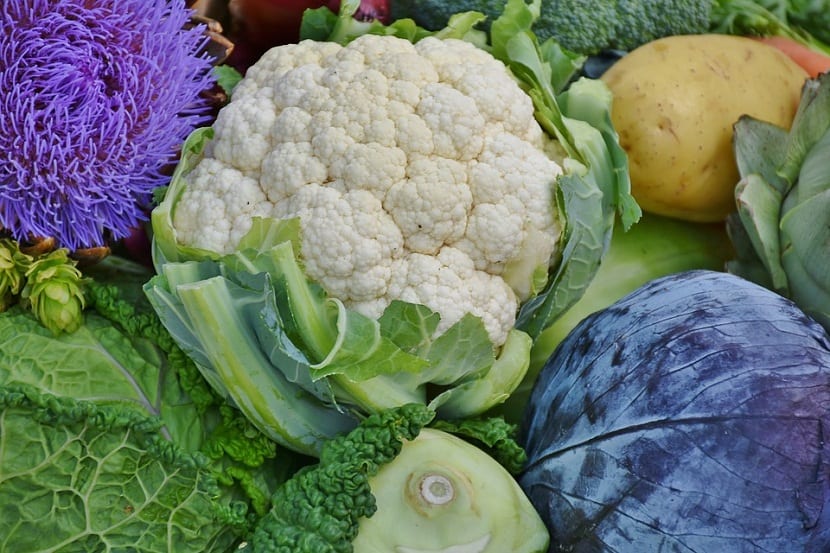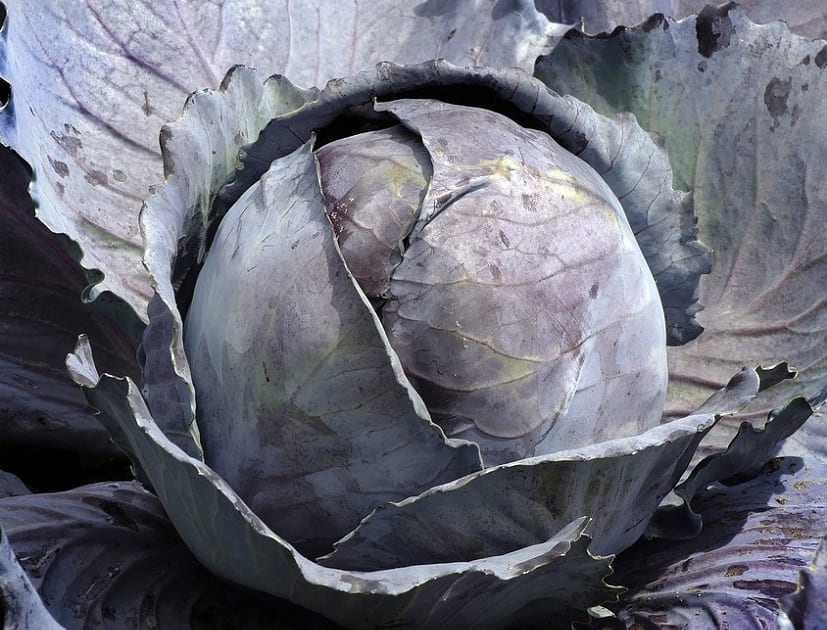
Cauliflower is a vegetable belonging to the varieties of the species brassica oleracea and it reproduces from the seeds.
Cauliflower is a plant that occurs throughout the year, however, the best production time for this vegetable It is found between the months of September and January in the countries of the northern hemisphere, but it can be sown throughout the year.
Cauliflower characteristics

Cauliflower has a high content of phytochemical components, as elements that contain sulfur, especially dimethylsulfide and trimethylsulfide, which give off a fairly strong odor when cooked.
This is a variety that is related to broccoli and its appearance is quite similar to this, apart from that it is a plant that consists of a white head that receives the name of dough or also pella, which represents being the only part that human beings can consume and is surrounded by quite thick green leaves.
Cauliflower it can measure approximately 30 cm in diameter and its weight can be found around 2 kg.
The color of the edible part is usually white with shades of yellow, green or it can also be purple depending on the variety that is cultivated and its flavor is quite mild, being able to have a slightly sweet taste.
Among its main components is water, this being a food that has a low calorie content, something that is due to the fact that its content of carbohydrates, proteins and fats is quite low. However, this vegetable is considered an important source of dietary fiber, vitamin B6, folic acid, vitamin B5, as well as small portions of other vitamins that belong to the group of vitamin B and also minerals.
It has a great content of diuretic properties, since it has a high content of water, potassium and at the same time it is a food with a great contribution of sodium.
Consuming cauliflower is of great help to our body because it eliminates excess fluids from it, apart from the fact that it has many benefits for the treatment of diseases such as hypertension, fluid retention and oliguria And it is that by increasing the production of urine, it gives us the possibility of eliminating, apart from liquids, all those substances that are dissolved in it, such as uric acid, urea, among others.
Thus this is a recommended food for those who suffer from hyperuricemia, gout and for those who are prone to developing kidney stones.
What is the care of cauliflower?

For irrigation
For growing cauliflower, this you will need an excellent supply of water in abundance and regular, so that it can maintain its humidity permanently.
When the flower has formed, it is not recommended to water it overhead, since this could cause fungi to appear or it can even cause putrefaction, so it is best to use an irrigation system that is drip and / or has an automatic programmer to regulate the water content in this way.
Nutrient content
Being a vegetable of excellent nutritional contribution, it needs a high content of decomposed organic matter compost.
Substratum
These are plants that have the ability to adapt to pH, they have preference for soils that are neutral, quite soft and fertilized, which in turn have a regular humidity in what is their growing cycle.
Cauliflower cultivation

To sow cauliflower we must bear in mind that this varies depending on its types, but in most cases we have to avoid damage to the roots at the time of transplantation:
Varieties of autumn summer seasons
To sow this vegetable we have to do it between the months of January and March in seedbeds that are protected.
Varieties of seasons summer winter
We have to sow them in seedlings that are in the open air between the months of May and June.
Varieties of winter spring seasons
In the same way we have to sow them in seedbeds that are outdoors between the months of July to September.
For the cauliflower transplant, this is a task that we have to do once the plant has three or five leaves, since we must plant them in a place that is open, with lots of sunlight and with a soil that has enough moisture. When sowing it, we must bury the roots and the stem until it reaches the base of the first leaves, being very careful that no earth falls on the central shoot.
Must keep the soil sufficiently moist, but taking into account that there do not have to be puddles, since they can cause root suffocation and would stop their growth.
Cauliflower diseases and pests

Cabbage hernia
This is one disease caused by a fungus, which causes bulges in the stem and also in the roots, causing the leaves to wilt. So that we can avoid this, it is best to make rotations with enough space.
Cabbage butterfly
This is a white butterfly that has little black dots and these they lay their eggs on the underside of the plant's leaves.
Their larvae, which are usually green in color covered with hair, advance, consuming the leaves only, leaving the central nerve. So that we can prevent it we have to exterminate their eggs and the caterpillars using our hands.
Cabbage fly
This is a type of fly quite similar to the fly we know. This is a fly that performs the laying of eggs on the neck of the plant stem and they cause galleries, causing the main stem to be completely hollow. The younger plants wither and therefore die, in turn the leaves turn a green color with shades of gray, which are covered with a fairly thick layer of wax.